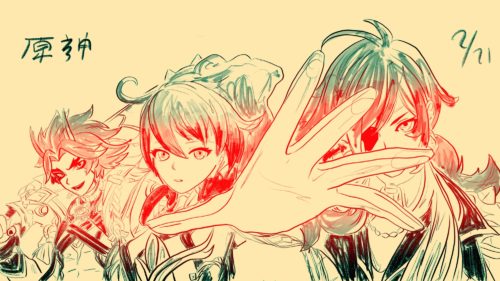Baijiu: Everything you need to know about China’s national liquor
Baiju is the world’s most popular drink. Yet, for all its popularity, it is still poorly understood within and without China. We’re here to help.

Baijiu has been called many things: China’s national drink, a social lubricant, white lightning. Like a thunderstorm, it announces its arrival at some distance. To have encountered it once — its unique bouquet, intensity of flavor, and ensuing complications — is to know it forever.
It is also the world’s most popular drink — each year, roughly 10 billion liters of it is produced and consumed. It is one of the world’s most diverse drinks and, for adventuresome tipplers, one of the most rewarding. A consumer can sometimes move from apprehension to grudging acceptance to appreciation in a single sitting.
Yet for all its popularity and all the emotion it evinces in its subjects, baijiu — 白酒 (báijiǔ), literally “white alcohol” — is still poorly understood within and without China. We’re here to help.

What is it?
One of the stickiest misconceptions surrounding baijiu is that it is a single type of distilled spirit, like vodka or gin. Baijiu is in fact an eclectic category of traditional Chinese spirits that includes at least a dozen unique drinks. This is also what makes baijiu great for new drinkers: Its variety is endless, and there are products within the category suitable for almost every taste.
So what do these drinks have in common?

All baijius are distilled from grain, usually sorghum, but sometimes rice, wheat, corn, millet, and others. Any cereal can be turned into a baijiu. What makes baijiu different from most of its global counterparts is the use of an ancient ingredient called qū 曲, a grain-based culture of microorganisms that converts starch into alcohol. The solid fermented grain is steamed in a device that functions like a large dim sum basket, and the resulting vapors are collected and cooled back into a potent, flavorful liquid: baijiu.
Contemporary Chinese distillers typically age baijiu for at least six months, blend it for complexity and consistency, and bottle it between 38-65% alcohol by volume. That means it can alternatively serve as a sedate sipper or an industrial-strength sedative. Choose accordingly.

What are the different styles of baijiu?
The major styles of baijiu are grouped by “aroma-type” (香型 xiāng xíng), an official system developed in the late 20th century in which each type corresponds to a specific regional production style. The government currently recognizes 12 styles, but four of them account for the overwhelming majority of the market:
Rice-aroma baijiu
米香 mǐ xiāng
Distilled from long- and short-grain rice, this is a mild and approachable baijiu from southeastern China, especially Guangxi and Guangdong provinces. Rice aromas often taste of toasted rice, lemon rind, and honey — somewhere in the spectrum between a vodka and a Korean soju. Its mildness makes it ideal as a base for infusions.
Notable brand: Guilin Sanhua
Light-aroma baijiu
清香 qīng xiāng
Don’t let the name mislead you — this type tends to be the most potent of the bunch. Distilled from sorghum fermented in stone containers, this is a dry, herbaceous drink with a sweetness reminiscent of raisins and apricots. Originally from Shanxi Province, it is perhaps best known for the cheap and notorious Èrguōtóu 二锅头 subcategory, invented in Beijing.
Notable brands: Xinghuacun Fenjiu, Red Star
Strong-aroma baijiu
浓香 nóng xiāng
China’s most popular style of baijiu, originating in Sichuan. Strong aroma uses a mash of sorghum, sometimes blended with other grains, repeatedly fermented for months at a time in subterranean mud pits. It is fruity, floral, and funky, with notes of pineapple, anise, and cheese.
Notable brands: Luzhou Laojiao, Wuliangye
Sauce-aroma baijiu
酱香 jiàng xiāng
Sauce, as in soy sauce. This style comes from Guizhou and combines northern and southern production techniques, using stone-lined pits for the fermentation of sorghum. It is an earthy, umami brew with an impenetrable blend of flavors: sesame, caramel, mushrooms, coffee, dark chocolate, herbs, nuts, etc. It is distinct enough that it leaves little middle ground — you’ll either love it or hate it.
Notable brand: Kweichow Moutai


What are baijiu’s origins?
Legend has it that Yi Di, one of Yu the Great’s court chefs, invented alcoholic beverages 4,000 years ago. For this heroic feat, Yi Di was promptly banished.
Archeological evidence suggests that the Chinese started making booze much earlier, some 9,000 years ago. Scholars theorize that this ancient grog was central to the religious rituals of the ancient Chinese, who believed intoxication was a portal into the spirit realm. The same effect can still be achieved with a well-executed hotpot bender.
Around 1000 BCE, the Chinese invented qu, which became the basis of all subsequent Chinese alcoholic beverages, as well as every Chinese fermented food from soy sauce to tofu. Until the past century, Chinese drinking culture was dominated by a beverage made from the combination of grains and qu, which we now call yellow wine (黄酒 huángjiǔ). An expensive drink that requires a significant expenditure of grain to produce, it was enjoyed principally by China’s bureaucratic elite.
Distillation arrived in China much later, roughly 800 years ago. Historical consensus suggests that the wine still — the technological prerequisite to hard liquor — arrived in China from the Middle East via the Mongol Hordes or preexisting trade routes. By the Ming Dynasty the Chinese had developed several regional styles of shāojiǔ 烧酒 (“burnt wine”), which was rough stuff favored by the peasantry for its potency and relative affordability.
Upon the foundation of the PRC in 1949, the Communist Party elevated the status of the proletariat’s preferred tipple. Shaojiu production techniques, previously only passed down from master to apprentice, were studied and modernized. Vast state-run distilleries were established around the country, forming the backbone of the modern Chinese spirits industry. And somewhere along the way, shaojiu got a new name: baijiu.

How should one drink it?
Baijiu is always served at mealtimes alongside food, and alcohol is seen as an inseparable part of China’s rich culinary landscape. It falls under the category of one of the so-called “five flavors” (bitter, if you were curious), which must be in balance for the achievement of gastronomic harmony. Moreover, each style of baijiu grows out of a regional tradition, and is uniquely suited to that region’s cuisine. The sweetness of strong-aroma baijiu accentuates the spice of Sichuanese cuisine, the funkiness of sauce-aroma plays off of the sourness of Guizhou cuisine, and so forth. Thus, if we believe the ancient wisdom, one cannot have a balanced diet — and, by extension, one cannot be a fully realized human — without alcohol.
In terms of etiquette, two rules remain constant in Chinese drinking culture: Never drink alone and never drink without a purpose. Practically, this means that traditional Chinese drinking is communal, and always presented as an offering. In ancient times this offering was made to a god or spirit, which over time evolved into the toast between friends, family, and colleagues. Toasting is a reciprocal relationship by which the toastee is expected to return the gesture before the session’s end. Five shots can become 10 in short order, so pace yourself and don’t start drinking unless you’re prepared to go the distance.
What’s next for baijiu?
Like most things baijiu-related, the future is hazy. Its reputation as “what grandpa drinks,” coupled with a growing taste for international drinks among China’s younger generations, indicate baijiu’s current trajectory is unsustainable. If baijiu is to survive, it has to broaden its appeal.
Thankfully, this is well understood among baijiu producers, who have made great efforts to appeal to new consumers in recent years. Many baijiu distilleries now produce lower-proof and/or flavored products aimed at the “kids,” and a number of international outfits, some in partnership with Chinese distilleries, are creating brands aimed at creating a market for baijiu outside of Asia (full disclosure: I am co-founder of one such brand, Ming River).
How and when baijiu will be widely accepted outside of China remains a matter of debate, but it seems certain that baijiu must adapt to the needs of its new consumers. The drink’s most obvious landing place is in Chinese restaurants, but craft cocktail bars are another place where baijiu is likely to find a following. Traditionally the Chinese add flavor to baijiu by infusing it rather than mixing it in cocktails, but the notion that it must be complemented by other flavors could be applied to other drinks as easily as it is with food. And the early returns on baijiu’s use as a cocktail ingredient are promising — hundreds of bars and restaurants in Europe and the United States already feature baijiu on their menus.
So let’s lift a tiny glass to baijiu’s future, happy in the knowledge that Chinese alcohol has always changed with times and circumstances. Adaptability and ingenuity are the source of its enduring popularity.







